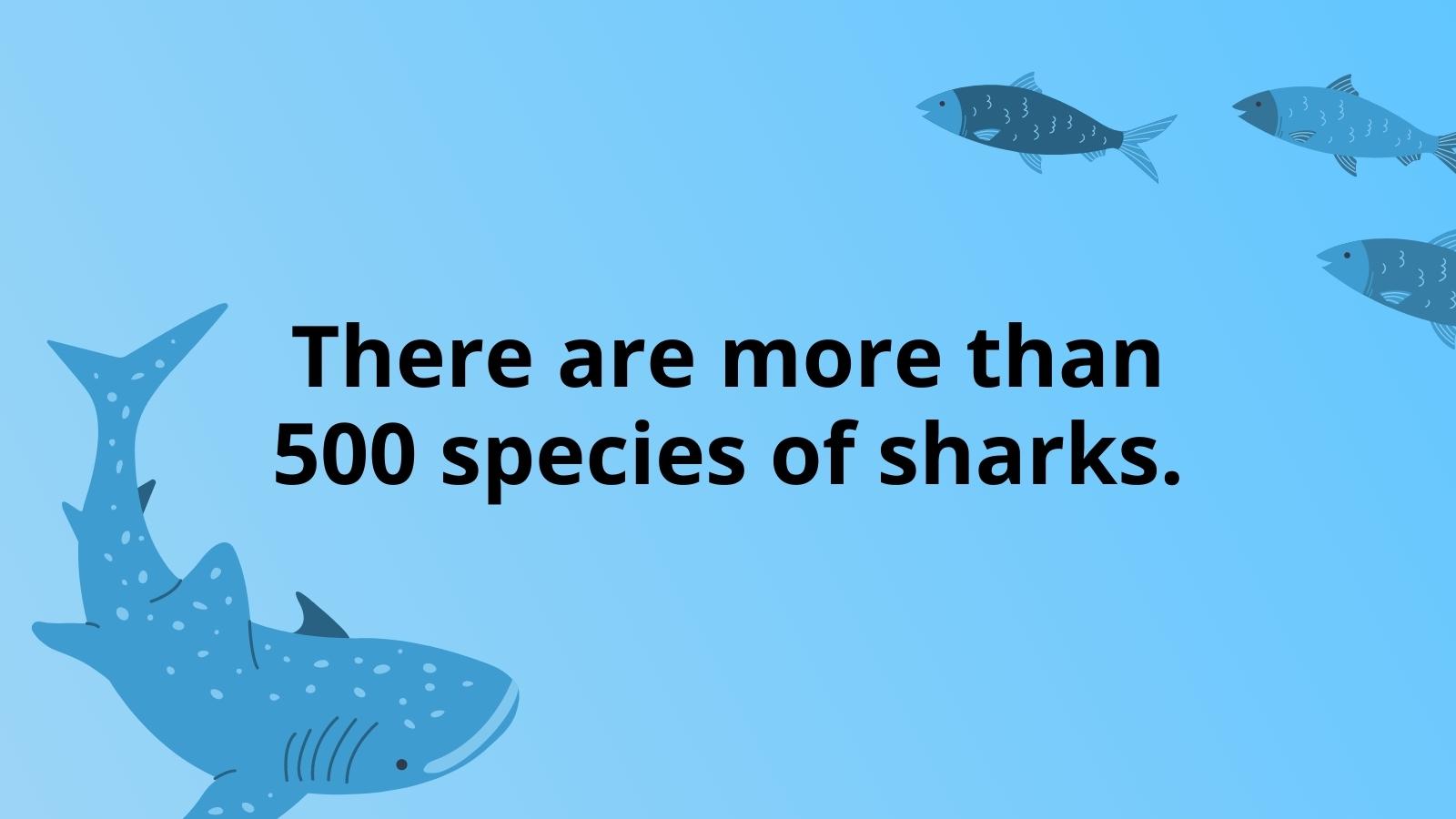Sharks get a bad rap. There are countless movies out there depicting them all as dangerous predators, ready to pounce as soon as we dip our toes in the water. The truth is that they have been around a long time and tend to live quietly in our oceans. Here’s a great list of fascinating facts about sharks for kids you can share in the classroom.
Facts About Sharks for Kids
There are more than 500 species of sharks.
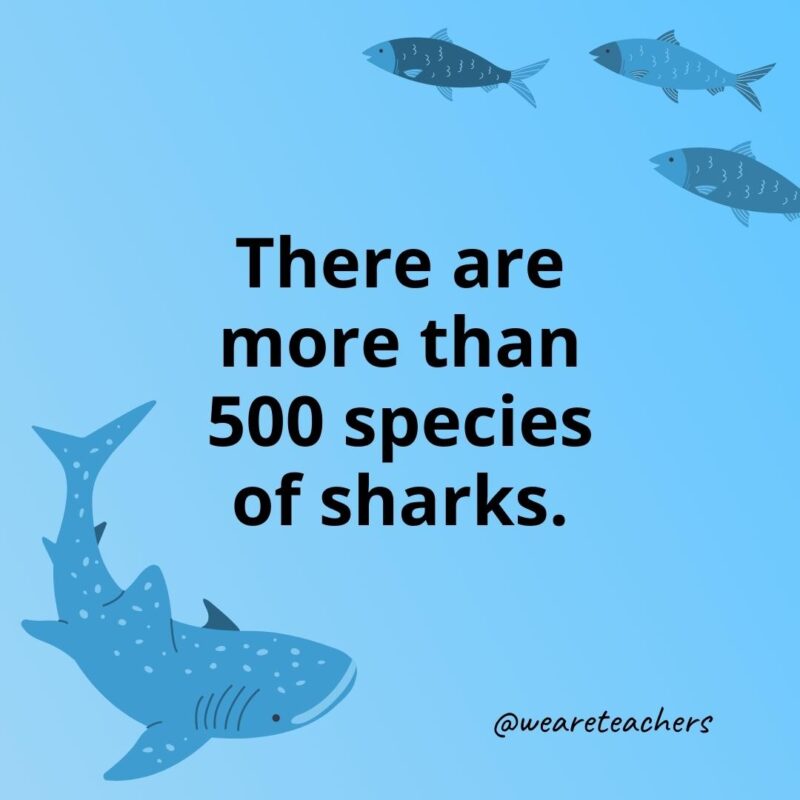
While many of us think of large, toothy beasts, the reality is that there are many types of sharks around the world. Here’s a video about seven of the most unique shark species.
Sharks have been around longer than dinosaurs.

Long before dinosaurs roamed the Earth, sharks were swimming in our oceans. In fact, they’ve been around for over 400 million years. They don’t have bones (their skeletons are made of cartilage), though, so there are no fossils to be found. Watch this video about the strangest prehistoric sharks.
Whale sharks are the biggest sharks.

They can be as large as 50 to 60 feet!
Sharks come in all sizes.

While the whale shark is enormous, the pygmy shark is just seven inches long! The average shark is roughly the same size as a human.
Female great white sharks are bigger than males.

Although some have been documented at 20 feet long, the average female great white shark is 15 to 16 feet long, while the average male is just 11 to 13 feet long.
Sharks have excellent vision.

Water can be murky, but fortunately, sharks have incredible vision. In fact, their night vision is even better than that of a wolf or a cat!
Great white sharks have a LOT of teeth.

You might not want to get up close and personal with a great white shark since their mouths are filled with 300 triangular-shaped, super-sharp teeth arranged in up to seven rows. They can go through 20,000 teeth in their lifetime!
Sharks are carnivores.
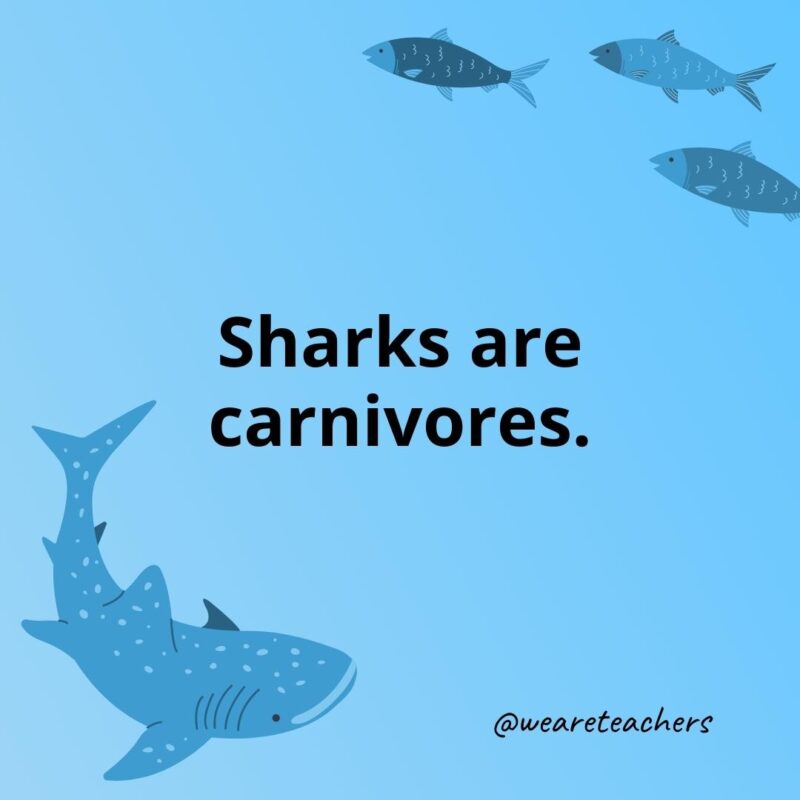
All sharks are meat eaters. The smaller species stick to plankton, shellfish, and small animals while the large sharks feast on fish, seals, and sea lions.
Sharks are picky eaters.

Before deciding whether to go for the kill, sharks often take one bite to see if it’s worth it.
Most sharks don’t attack humans.
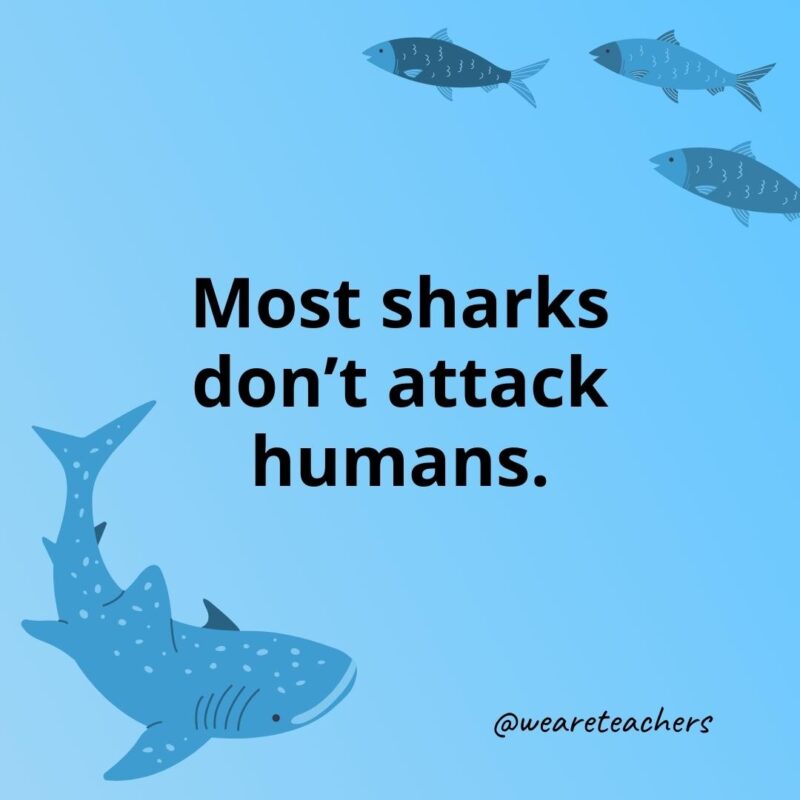
The large majority of sharks—97 percent of the shark species—are not interested in humans. Great white shark attacks do happen, but rarely. When they do bite, however, researchers think it’s usually out of curiosity since they usually take a “sample bite” and then swim away.
Sharks are apex predators.
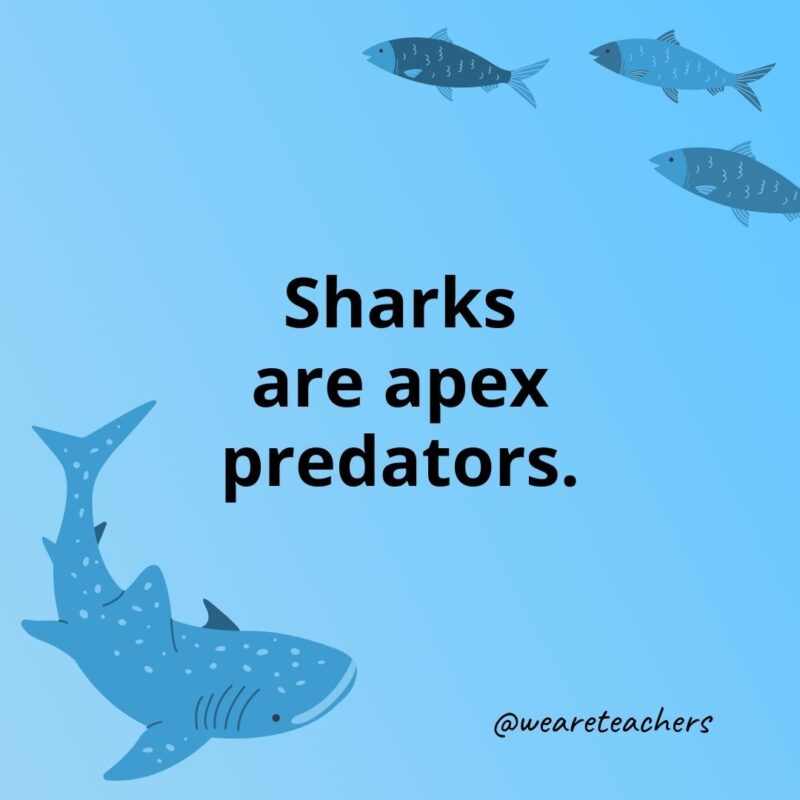
Playing a vital role in maintaining the health of the marine ecosystem, sharks keep the food chain balanced by eating fish.
Great white sharks take their prey by surprise.

These incredible creatures know it’s important to have a good strategy. They lie in wait, often positioning themselves beneath their unsuspecting prey. Then, they quickly swim up and trap their food with their teeth before bursting out of the water and then falling back in to enjoy their meal.
Sharks have a strong sense of smell.

A shark’s sense of smell is a whopping 10,000 times better than ours! Great white sharks can detect a colony of seals from two miles away and can even smell one drop of blood in 100 liters of water.
Sharks have great hearing.

Thanks to their inner ears—the small openings seen on the side of their heads—sharks have very sharp hearing. They can register much lower frequencies than humans, allowing them to hear movements in the water from miles away.
Sharks have an incredible sixth sense.

Along with hearing, vision, taste, smell, and touch, sharks also have a sixth sense: electro-reception. This additional sense gives them a considerable advantage over prey, providing them the ability to sense the electric fields sent out by nearby animals. This is one of the most interesting facts about sharks!
Sharks live in most ocean habitats.

With the exception of the Mediterranean Sea, sharks can be found in all temperatures (even under the Arctic Sea ice!).
Sharks are colorful.

While most sharks have skin that is rough, gray, and covered in scales, you’ll find species in vibrant colors such as cream, yellow, and even pink!
Hammerhead sharks get their name from a tool.

As the name suggests, this unique-looking shark received its name because its head is shaped like a hammer! Watch this video to learn more about hammerhead sharks.
Sharks don’t have bones.
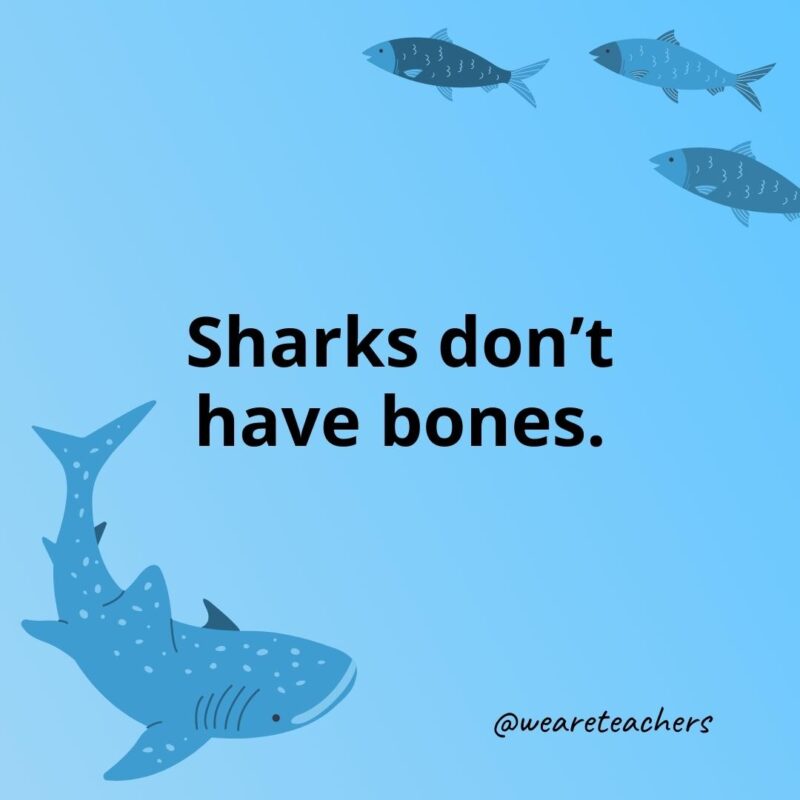
Instead of bones, shark skeletons are made of cartilage, making them much lighter and more buoyant.
Most sharks are cold-blooded.
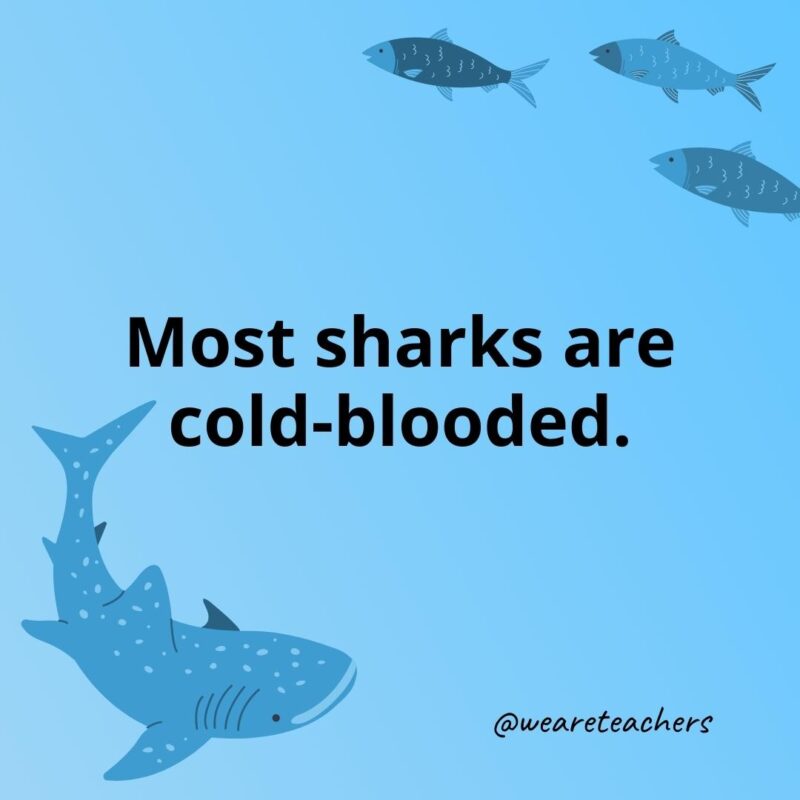
Much like the water that they swim in, the body temperature of most sharks is cold. An exception is the partially warm-blooded great white shark.
Sharks can reproduce in three ways.

The three ways that sharks can reproduce are when females give birth to live babies, when eggs hatch inside of the female, or when eggs are laid onto rocks or seaweed.
Great white sharks may try to eat their babies.

When the offspring is born, they receive no care from their mothers. Instead, they must fend for themselves and immediately swim away to avoid being eaten!
There’s a cookie-cutter shark!

This shark’s bite leaves a mark similar to that of a cookie cutter!
Most sharks are loners.

Aside from a few species, such as the spiny dogfish shark, most sharks live on their own.
The shortfin mako shark is the fastest shark.

These magnificent sharks can reach a speed of 60 miles per hour when hunting down prey.
Sharks can drown.

This is one of those facts about sharks that might shock you, but they can actually drown if they stop moving. While they can breathe through the gills on their sides, they must swim constantly to keep from sinking!
Some sharks are great jumpers.

Both the great white shark and shortfin mako can jump 10 feet or more out of the water!
The average shark lives 20 to 30 years.
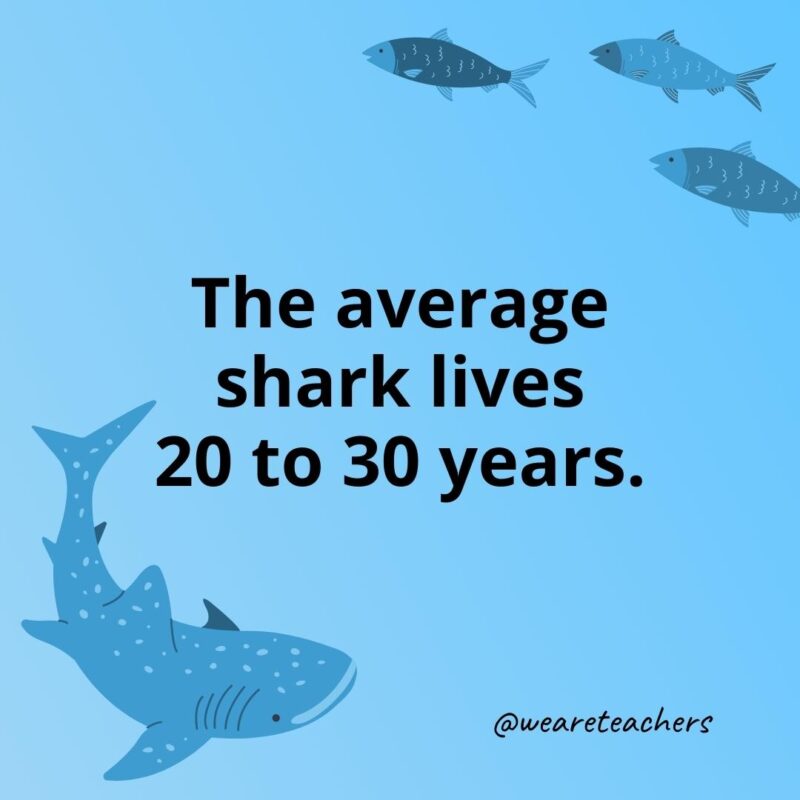
While most sharks do live for two to three decades, scientists estimate that the Greenland shark can live for 250 years!
Sharks are in danger.
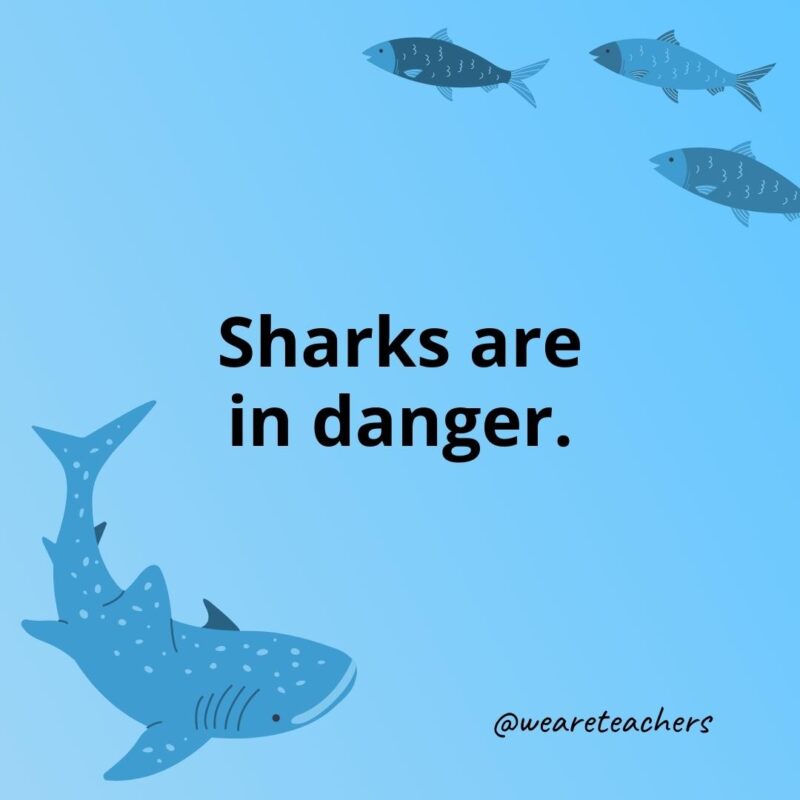
Despite the fact that they’ve been around since before the dinosaurs walked the Earth, sharks are facing many threats today. Sometimes, they are hunted for their fins and other times they accidentally get caught in fishing gear. Beyond that, though, climate change and ocean pollution have had a major impact on sharks’ natural habitat, putting them at great risk. Here’s a quick video on one way we can improve marine protection.
What are your favorite facts about sharks? Share in the comments below! Be sure to check out these cool animal facts, too.
Want more articles like this? Be sure to subscribe to our newsletters!

